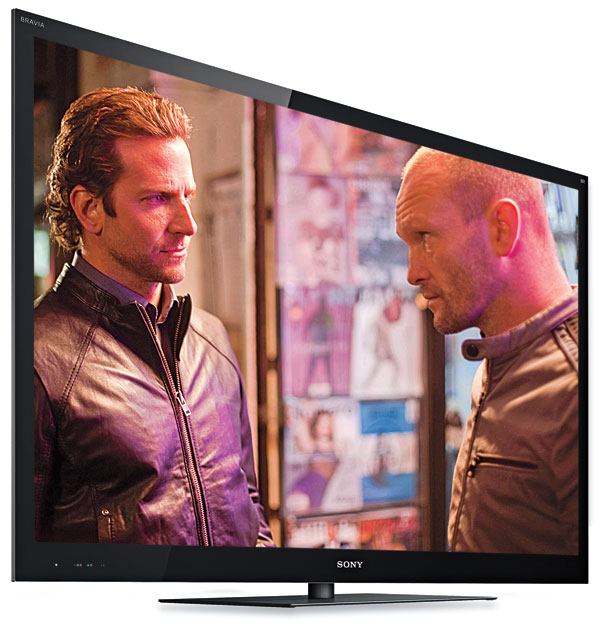Sony Bravia XBR-55HX929 3D LED LCD HDTV Page 3
A head tilt also produces obvious color shifts (red in one direction, green in the other). At press time, Sony told us that viewers who are bothered by this can order free polarizer lenses that mount on the glasses. Be aware that any benefits are said to come at the expense of a darker image and the appearance of flickering in room lights. We were unable to test these in time for our deadline. But based on the ghosting evident with the unadorned glasses, I couldn’t attempt a 3D color calibration on this set. Still, with the 3D white balance controls set to the 2D calibration values (you must insert them manually, as the controls for 3D and 2D are separate) and the Warm 2 color temperature selected, I had no issues with the Sony’s 3D color performance.
I did see some ghosting in the Sony’s 2D-to-3D conversion mode, which otherwise was neither more nor less effective than this feature has been on other 3D HDTVs. One other 3D issue I experienced was visible flicker in large, bright areas of white or a uniform color. But this was rare on most normal program material.
Comparisons
With the 55-inch Panasonic TC-P55VT30 3D plasma (Home Theater, September 2011) still in house, a direct comparison between that and the Sony XBR55HX929 proved irresistible. I matched the setup of the two sets as closely as possible, which required me to further lower the Sony’s backlight control to match the inherently dimmer Panasonic plasma. I was running the Panasonic as hot in its cinema mode as I reasonably could, while the Sony had gobs of brightness yet to spare (this will be true of any properly conducted plasma-versus-LCD comparison).

I did this comparison only in 2D for several reasons. Primarily, the different 3D glasses that the two sets use would make a direct, side-by-side comparison impossible. But the 3D differences between the sets were obvious even without a direct comparison. The Sony is considerably brighter, while the Panasonic is free of ghosting under any circumstances we’ve been able to generate.
In this 2D comparison, there was almost nothing to say about the two sets concerning their relative color or resolution. While there were subtle differences, I doubt if anyone could see them short of this sort of side-by-side comparison. And even here,
they were elusive. The Panasonic does have superior off-axis performance—no surprise there. There were also differences in the Panasonic’s favor with some specialized motion blur tests (with the Sony’s Motionflow turned off), but these didn’t seem to matter nearly as much on real-world material.
The Sony’s total black easily trumped the Panasonic’s very good but not invisible full-screen blacks. Five key scenes from Stargate: Continuum vividly demonstrated the black level/shadow detail differences between the two sets. On the opening star field, the black background was less black on the Panasonic, but it showed more visible stars. The Sony put obvious halos around the brightest stars, while the Panasonic did not. In chapter 3, as a tramp steamer cruises across the Atlantic at night, both sets virtually tied with excellent shadow detail. But as the chief opens the door to the cargo hold later in the same chapter, the unlit space looked decidedly darker on the Sony. In the split-screen montage in chapter 10, the empty blocks were also a little darker on the Sony, although the difference was small. And in the Russian stargate installation (chapter 21), the Sony looked inkier, although the Panasonic avoided the slight black crush the Sony added to a few shots.
The biggest difference between the two sets, however, is the $1,000 premium in list price that the Sony commands. Of course, that gap will differ depending on the actual sale prices. Both are superb performers.
Conclusions
At $3,800 plus extra for 3D glasses, the Sony XBR-55HX929 is hardly a blue-light special. But you definitely get what you’re paying for. There are several other new local-dimming sets in our review pipeline, and it will be interesting to see how they compare. I’m always open to surprises, but they will have to cook up some very special sauce to perform better than the XBR-55HX929. This may not be the best 3D HDTV to pass through our studio, but I’d be hard-pressed to name a better one.













































